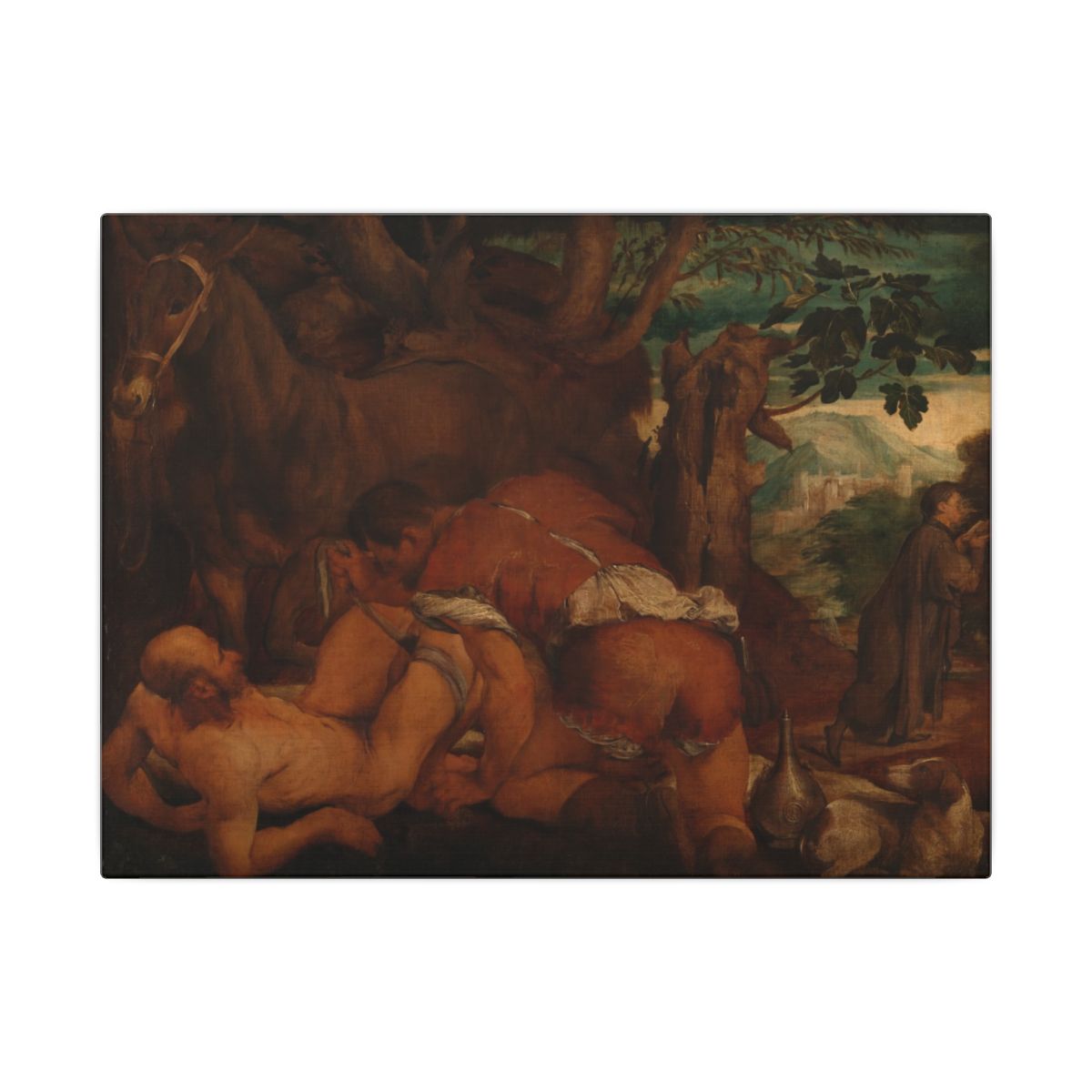The Holy Family
Artist: Bartolomé Esteban Murillo
Description: "The Holy Family" by Murillo: A Baroque oil painting depicting Mary, Joseph, and child Jesus, reflecting warmth, faith, and 17th-century Spanish religious art.
Price: Select options to see price
Product Option:
Why You'll Love It
The Holy Family by Bartolomé Esteban Murillo
Medium: Oil on canvas
Artist’s Background and Significance
Bartolomé Esteban Murillo (1617–1682) stands among the most celebrated painters of Spain’s Golden Age. Born in Seville, Murillo quickly rose to prominence, becoming renowned for his tender religious compositions, genre scenes, and mastery of soft, atmospheric light. His career flourished in a city brimming with religious fervor, making Seville one of the primary artistic centers of Counter-Reformation Catholicism. Murillo’s distinctive, sensitive rendering of sacred subjects, particularly of the Holy Family, Madonna, and child saints, secured his place as one of Spain’s most influential and beloved painters. He was also instrumental in founding Seville’s Academy of Art, shaping the next generation of Spanish artists.
Historical Context of the Artwork
Painted in the latter half of the seventeenth century, “The Holy Family” emerged during an era marked by the Catholic Church’s response to the Protestant Reformation. Spain was a leading defender of the Counter-Reformation, emphasizing art as a means of fostering religious devotion and piety. Murillo’s commissions often came from religious confraternities and wealthy patrons eager to enrich churches and chapels with inspiring biblical scenes. “The Holy Family” reflects the period’s values, presenting an intimate, accessible vision of sacred figures intended to resonate with everyday believers. The work’s gentle humanity was perfectly attuned to the tastes and spiritual needs of seventeenth-century Sevillians.
Religious and Cultural Significance
The depiction of the Holy Family—Jesus, the Virgin Mary, and Saint Joseph—holds deep significance within Christian iconography. In Murillo’s interpretation, the trio is often shown in a moment of quiet domesticity or tender interaction, emphasizing the sanctity not just of the individuals but of the family unit itself. Such imagery was central to Counter-Reformation goals: to provide relatable, emotionally engaging models of virtue, obedience, and love. Murillo’s “The Holy Family” served as both an object of veneration and a visual catechism, inviting contemplation of Christ’s childhood and the moral exemplars set by his earthly parents.
Symbolism and Iconography
Murillo’s compositions are rich in symbol and meaning. In “The Holy Family,” the artist typically situates the Christ child at the center, symbolizing his divine status and the focal point of salvation history. Mary is often depicted with downcast eyes and a serene expression, embodying purity, humility, and maternal devotion. Joseph, traditionally placed in the background in earlier iconography, is brought forward by Murillo as a nurturing father, emphasizing his role as protector and provider. Common attributes—such as tools (alluding to Joseph’s carpentry), lilies (symbolizing purity), and simple household settings—underscore the sanctity of daily life and labor.
Light plays a symbolic role as well. Murillo bathes the scene in soft, golden luminescence, suggestive of divine presence and grace. The gentle interplay of glances and gestures among the figures signifies unity, love, and the importance of familial bonds. The absence of lavish surroundings and overt miraculous elements roots the scene in relatable human experience, reinforcing the ‘ordinary’ sanctity the Church encouraged the faithful to emulate.
Artistic Techniques Used
Murillo’s mastery of oil painting techniques is fully evident in “The Holy Family.” He employs a luminous palette dominated by creamy whites, celestial blues, and gentle earth tones. His technique of sfumato—the subtle blending of colors without harsh outlines—creates an ethereal, atmospheric effect reminiscent of the Venetian school, particularly Titian and Veronese, whom Murillo admired. Soft transitions between light and shadow imbue the figures with warmth and solidity, while the use of glazes achieves a pearly sheen and vibrating luminosity.
The composition is carefully balanced and harmonious. Murillo arranges the figures to guide the viewer’s eye in a gentle circular motion, reinforcing spiritual unity and familial affection. The clothing’s textures, hair, and skin are rendered with astonishing delicacy and realism, drawing the viewer closer to the emotional core of the scene. Such technical finesse was not only an assertion of Murillo’s artistic skill but also a means of enhancing the painting’s devotional impact.
Cultural Impact
“The Holy Family” by Murillo has enjoyed enduring popularity throughout the centuries, both in ecclesiastical and domestic settings. His tender interpretations of religious subjects made them accessible to a wider audience, dissolving boundaries between the sacred and the everyday. Countless reproductions, engravings, and imitations spread Murillo’s vision throughout Spain and beyond, shaping the visual culture of Catholic Europe well into the eighteenth and nineteenth centuries.
The painting typifies the kind of humane religious art promoted in Baroque Spain—intimate, emotionally resonant, and didactic. Through works like “The Holy Family,” Murillo influenced a host of later artists, from Goya to the Nazarene painters of the nineteenth century, who continued to blend devotion and naturalism. Today, Murillo’s paintings remain central to Spanish cultural identity and religious heritage, symbolizing an ideal of domestic harmony, faith, and gentle compassion.
Sources
- Brown, Jonathan. Murillo & His Drawings. Yale University Press, 2012.
- National Gallery of Art. “The Holy Family with a Little Bird.” https://www.nga.gov/collection/art-object-page.46490.html
- Museo del Prado. “Bartolomé Esteban Murillo.” https://www.museodelprado.es/en/the-collection/artist/murillo-bartolome-esteban
- Kahr, Madlyn. Bartolomé Esteban Murillo, 1617-1682. New York: New York University Press, 1977.
- Bennett, Shelley. “Murillo’s Holy Families and the Seville Cathedral.” The Burlington Magazine, Vol. 116, No. 852, 1974, pp. 338–344.
Who Made It
Created by Bartolomé Esteban Murillo.
All Available Options
Below is a list of all the available options for this product. If you don't see what you're looking for, please contact us.
Shipping & Returns
All items are custom-made just for you! We partner with JonDo for fulfillment, and your order will typically arrive within 2-5 days. Since each piece is crafted to order, we don't offer returns, but we've got your back—if there's a defect or an issue caused by us or shipping, we'll do our absolute best to make it right. Questions? Feel free to reach out!
